 Facebook
Facebook
 X
X
 Instagram
Instagram
 TikTok
TikTok
 Youtube
Youtube
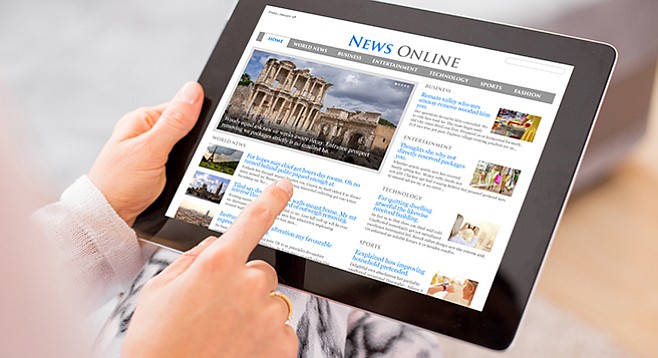
"Get a horse!” From 1900 to the 1920s, those were the words that made a comedian out of every American who shouted them. Those bellowed beratings were, of course, aimed at people who had purchased one of those newfangled things called “automobiles” and were stuck in the mud, repairing a flat tire, bemoaning a broken-down engine, or cranking a starter.
The expression eventually died. Automobiles triumphed. The population of American horses plunged from 26.5 million in 1915 to a mere 3.6 million in 2012.
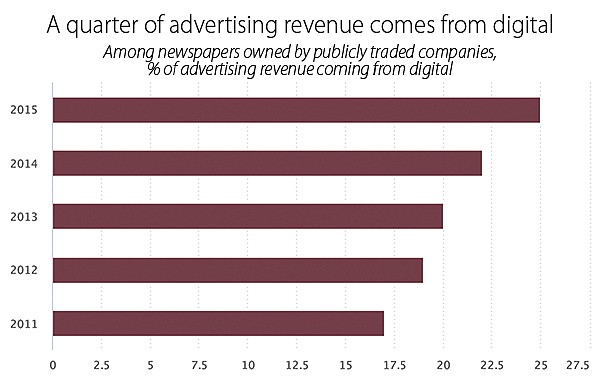
Now there is a different rivalry. Readership of print-only newspapers has plunged from 35.4 percent of the population in 2007 to 23.3 percent last year. Newspapers are pouring money into their online editions. Among executives of metro daily newspapers, the battle cry is “digital first!” Newspaper staffs have dropped by 39 percent in the past 20 years, according to the Pew Research Center. Reporters are now trained to use social media and regularly told that “multiplatform” is the future.
But will “digital first!” win out as decisively as “get a horse!” died? You can’t tell it from the statistics — at least yet, according to Hsiang Iris Chyi, a professor and new media researcher at the University of Texas at Austin. This year, with the help of a colleague, she published an eye-opening paper, Reality Check: Multiplatform Newspaper Readership in the United States, 2007–2015. The study picks up facts from such media research organizations as the Pew Research Center and Nielsen Scarborough.
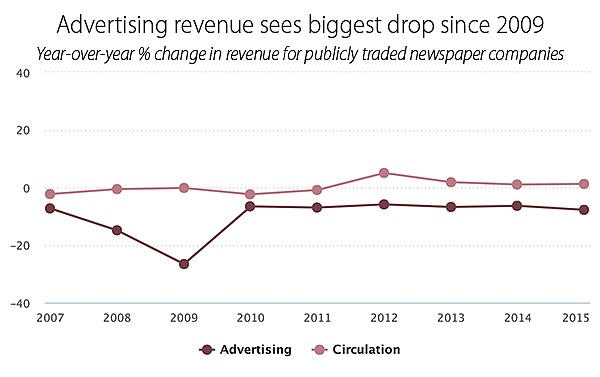
Online ventures have been around for two decades. Nonetheless, “the (supposedly dying) print product still reaches far more readers than the (supposedly promising) digital products in newspapers’ home markets, and this holds true across all age groups,” writes Chyi.
This raises serious questions about the technology-driven strategy of America’s metro daily newspapers, she says. Remember when Douglas Manchester owned the Union-Tribune? He and his sidekick John Lynch raved about multiplatforms. They had a TV station that broadcast on the paper’s website. It didn’t last long. Neither did Lynch —or Manchester.
A chain of daily newspapers in Denver went gaga over the preachings of a top executive who said digital is essentially newspapers’ only future. The holding company, which owns papers in Denver, San Jose, and St. Paul and recently bought the Orange County Register and Riverside Press-Enterprise out of bankruptcy, adopted the name Digital First Media.
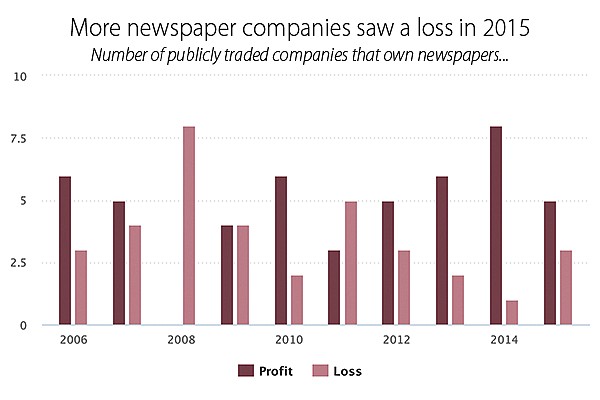
The Chicago-based newspaper chain that owns the Union-Tribune on June 20 changed its name to tronc — yes, the letter t is not capitalized, although some newspapers defiantly capitalize it. The company announced that it “will change its name to tronc, Inc., a content curation and monetization company focused on creating and distributing premium, verified content across all channels.”
Huh?
Wall Street doesn’t seem impressed with either print or online. For example, the biggest newspaper chain, Gannett, wanted to buy tronc. The Chicago-based chief executive of tronc — a financial swinger devoid of newspaper savvy — wanted $25 a share. According to inside sources, the deal could have been done at $20 — in my opinion, more than double what tronc was worth. Lenders — the only intelligent actors in this drama — smelled potentially deadbeat debtors and did not like the deal. In early November, it was scrapped. Tronc’s stock plunged.
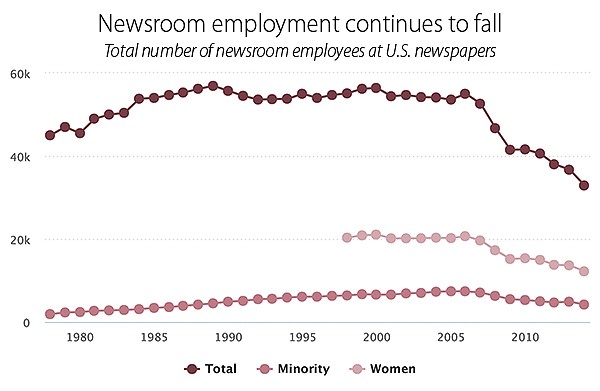
Chyi points out that major newspapers’ online readership “has shown little or no growth since 2007” and more than half of major newspapers have suffered digital declines since 2011. Citing Pew Research, Chyi says, “[D]igital revenue remains insufficient to cover the loss on print revenue.” Newspapers haven’t figured out how to make money on digital. When people seek out online news, they go to sites such as CNN.com, CBS News, ABC News, Google News, Reuters, Yahoo News, MSNBC, and FOXnews, which all do better than newspapers’ online offerings.
The bottom line is “monetization” — making profits. To make money, a company has to have healthy revenue. From 2010 to 2014, print advertising revenue dropped from $22.8 billion to $16.4 billion, while digital advertising revenue edged up from $3 billion to $3.5 billion, notes Chyi. Still, print newspapers account for 82 percent of total newspapers’ revenue.
So, newspaper managements may be looking the wrong way: they are focusing on digital, which is producing “only limited advertising and subscription revenue,” says Chyi. In a study of 51 newspapers’ audience reach, the print edition reached 28.8 percent of local adults and online only 10 percent.
Even young people age 18 to 24 are twice as likely to read the print edition as the online edition: 19.9 percent read the print edition and only 7.8 percent read the digital edition, according to a study by Scarborough (now Nielsen-Scarborough). Of course, those over 55 are much more likely to read a print edition than those 18 to 24. A full 37.2 percent of the old folks (55 and older) read a print edition, almost double the percentage of those 18 to 24.
Why aren’t online editions doing well? After all, they provide news and interpretation as it happens; newspapers delivered to your house are too late with too little. There are several reasons, says Chyi. Online news is a “less satisfying alternative to print newspapers,” particularly for someone who has been working at a computer all day. “The screen-based reading experience is rarely pleasant.” There are cluttered designs, and intrusive ads pop up all the time. If you have the sound on, you will get fingernails-on-the-blackboard screeches all day.
Of course, comparisons can be invidious; the total audience for a local newspaper won’t match the total audience for an international publication. However, among newspapers distributed nationally or internationally, USA Today, the New York Times, and the Wall Street Journal aren’t among the best-read online publications.
“Fully one-fourth of advertising revenue [for newspapers] now comes from digital advertising, but not because of growth in that area,” says Michael Barthel of the Pew Research Center. “Digital advertising revenue fell 2 percent in 2015. It’s just that non-digital advertising revenue fell more, dropping 10 percent in 2015.”
But the remaining three-fourths came from nondigital sources, mostly print. A local newspaper or TV station may study the statistics and back away from digital. And watch competitors take a chunk of the market.